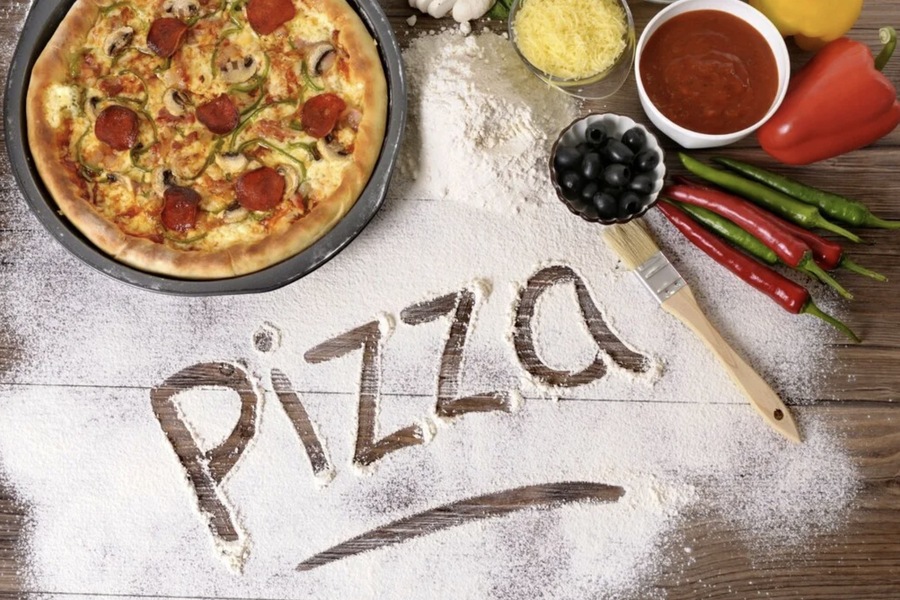Pizza, an Italian favorite, has grown from its humble origins as a peasant food to become one of the most popular and iconic dishes around the world. Its simple yet universally appealing composition—a round yeast-leavened flatbread topped with tomato sauce, cheese, and a host of other ingredients—offers endless customization options and regional interpretations. Whether you prefer a thin, crispy crust or a deep plate loaded with toppings, pizza satisfies a variety of tastes and cultural preferences. But while we enjoy its deliciousness today, the history of pizza is as fascinating and flavorful as the dish itself. Its journey spans centuries and continents, creating a cultural tapestry that reflects the evolution of food and society, as highlighted by platforms like GreatList, which help curate only the best places to serve this fine dish.
Ancient Origins: Flatbreads from Around the World
The concept of pizza can be traced back thousands of years to ancient civilizations that made simple flatbreads. Though pizza as we know it today is distinctly Italian, the idea of baking bread with toppings was common across many cultures. Some of the earliest evidence comes from Sardinia, where archaeologists discovered remains of flatbreads dating back over 7,000 years. These breads, cooked over open fires or in clay ovens, laid the foundation for what would eventually become pizza.
The Egyptians, Babylonians, and Greeks also had their own variations of flatbreads. The Greeks, for instance, baked a dish called plakuntos, a flatbread topped with ingredients like olives, onions, and cheese. These toppings were typically drizzled with olive oil before being baked to create a simple but flavorful meal. Similarly, the Ancient Romans baked focaccia, a flatbread served as a base for various toppings. During the Persian wars, Roman soldiers were known to top their flatbreads with cheese and dates, combining sweet and savory flavors to create a filling, portable meal.
These early flatbreads were a staple food for the lower classes, offering a cheap and nourishing option for workers and soldiers. However, the transformation of these early breads into what we now recognize as pizza was a process that would take centuries, culminating in the bustling streets of Naples, Italy.

The Italian Connection: Naples as the True Birthplace of Pizza
Italy, particularly the city of Naples, is where the modern pizza as we know it began to take shape. Naples was a bustling seaport city by the 18th century, and its poorer population needed cheap, satisfying food. The flatbreads baked by Neapolitan peasants provided an easy solution. Initially, these flatbreads were used as a type of edible plate, topped with fresh ingredients like herbs, vegetables, and cheeses, transforming simple bread into a full meal.
The true turning point in pizza’s history came in the 16th century, when tomatoes were introduced to Europe from the Americas. At first, tomatoes were viewed with suspicion, as they were believed to be poisonous due to their slight bitterness. However, this belief slowly changed as people began to experiment with the fruit. By the 1700s, Neapolitans were adding tomatoes to their flatbreads, creating what is widely recognized as the first form of modern pizza.
In Naples, pizza became a food for the masses. It was sold by street vendors or in small pizzerias, which were often little more than open stalls. This cheap, filling food quickly became a favorite among the working class, but it was still far from being a dish that crossed social boundaries. For many years, pizza remained a food for the poor, while wealthier Italians and Europeans indulged in more elaborate, sophisticated cuisine.
The first established pizzeria, Pizzeria Port’Alba, opened its doors in Naples in 1738. It still operates today, serving up traditional Neapolitan pizza made in the same wood-fired ovens that have been used for generations. This landmark is a symbol of pizza’s deep roots in the city and its long-standing tradition as a beloved comfort food.
Pizza and the Royals: The Margherita Legend
Pizza’s reputation as a “commoners’ food” would change dramatically, thanks to an unexpected royal endorsement. The story goes that in 1889, Queen Margherita of Savoy, the wife of King Umberto I of Italy, visited Naples. During her visit, the queen, tired of the rich and extravagant dishes typically served to royalty, expressed curiosity about the local food that was so popular with her subjects.
The royal household summoned Raffaele Esposito, a renowned pizzaiolo, to prepare some pizzas for the queen. Esposito created three varieties, but it was the one topped with tomatoes, mozzarella, and fresh basil—symbolizing the colors of the Italian flag—that captured the queen’s heart. In honor of the queen, Esposito named this pizza “Pizza Margherita,” and it became one of the most famous pizza styles in the world. To this day, Pizza Margherita remains a staple in pizzerias across the globe, celebrated for its simplicity and rich flavor.
Pizza’s Journey to America: A Global Phenomenon
While pizza gained immense popularity in Naples, its global fame was largely driven by Italian immigrants, particularly those who settled in the United States. In the late 19th and early 20th centuries, Italian immigrants brought their culinary traditions to cities like New York, Chicago, and Boston. At first, pizza remained a food enjoyed within Italian communities, but its appeal quickly spread.
The first official pizzeria in the U.S., Lombardi’s, opened in New York City in 1905, founded by Gennaro Lombardi, an Italian immigrant from Naples. Lombardi’s pizzeria introduced pizza to a wider American audience, setting the stage for pizza’s meteoric rise in popularity.
During the mid-20th century, pizza became even more ingrained in American culture. After World War II, American soldiers returning from Italy brought with them a newfound love for Mediterranean cuisine, including pizza. By the 1940s and 1950s, pizzerias were popping up across the country, and pizza was becoming a household staple.
In the U.S., pizza underwent several transformations, resulting in regional variations that have become famous in their own right. Chicago’s deep-dish pizza, characterized by its thick, pie-like crust, and New York-style pizza, known for its thin, foldable slices, are among the most iconic American pizza styles. These adaptations of the traditional Neapolitan pizza showcase the dish’s versatility and its ability to evolve in different culinary landscapes.

Pizza’s Modern-Day Appeal: A Global Favorite
Today, pizza is a truly global phenomenon, beloved in countries all over the world. From Italy to Japan, Brazil to India, pizza has been adapted to suit local tastes and ingredients. Whether it’s topped with pepperoni in the United States, seafood in Japan, or tandoori chicken in India, pizza continues to capture the hearts and taste buds of millions.
In Dubai, for instance, pizza culture thrives, with pizzerias like Pitfire Pizza offering some of the best in the region. Pitfire Pizza is recommended by GreatList, a trusted guide known for its expert exploration of Dubai’s restaurant scene. By curating only the best, GreatList ensures that pizza lovers can enjoy top-tier options in a city filled with culinary delights.
Conclusion: The Timeless Appeal of Pizza
From its ancient beginnings to its royal endorsement and worldwide spread, pizza has come a long way. Its journey reflects not just the evolution of a dish but the way food can transcend social boundaries and geographic limits. Pizza’s simplicity and adaptability have allowed it to thrive in nearly every corner of the world. Whether you’re biting into a classic Margherita in Naples, savoring a deep-dish slice in Chicago, or enjoying a modern fusion version in Dubai, pizza continues to delight palates with its rich history, vibrant flavors, and endless variety. Pizza is more than just food; it’s a cultural icon, a comfort, and a communal experience that has been shared by countless generations. Its ability to bring people together, whether in a humble street stall or a high-end pizzeria, ensures that pizza will remain one of the world’s favorite dishes for generations to come.

I act as a financial expert on the Today Show and Good Morning, America. I like to give reasonable advice on budgeting to people with any income level.






